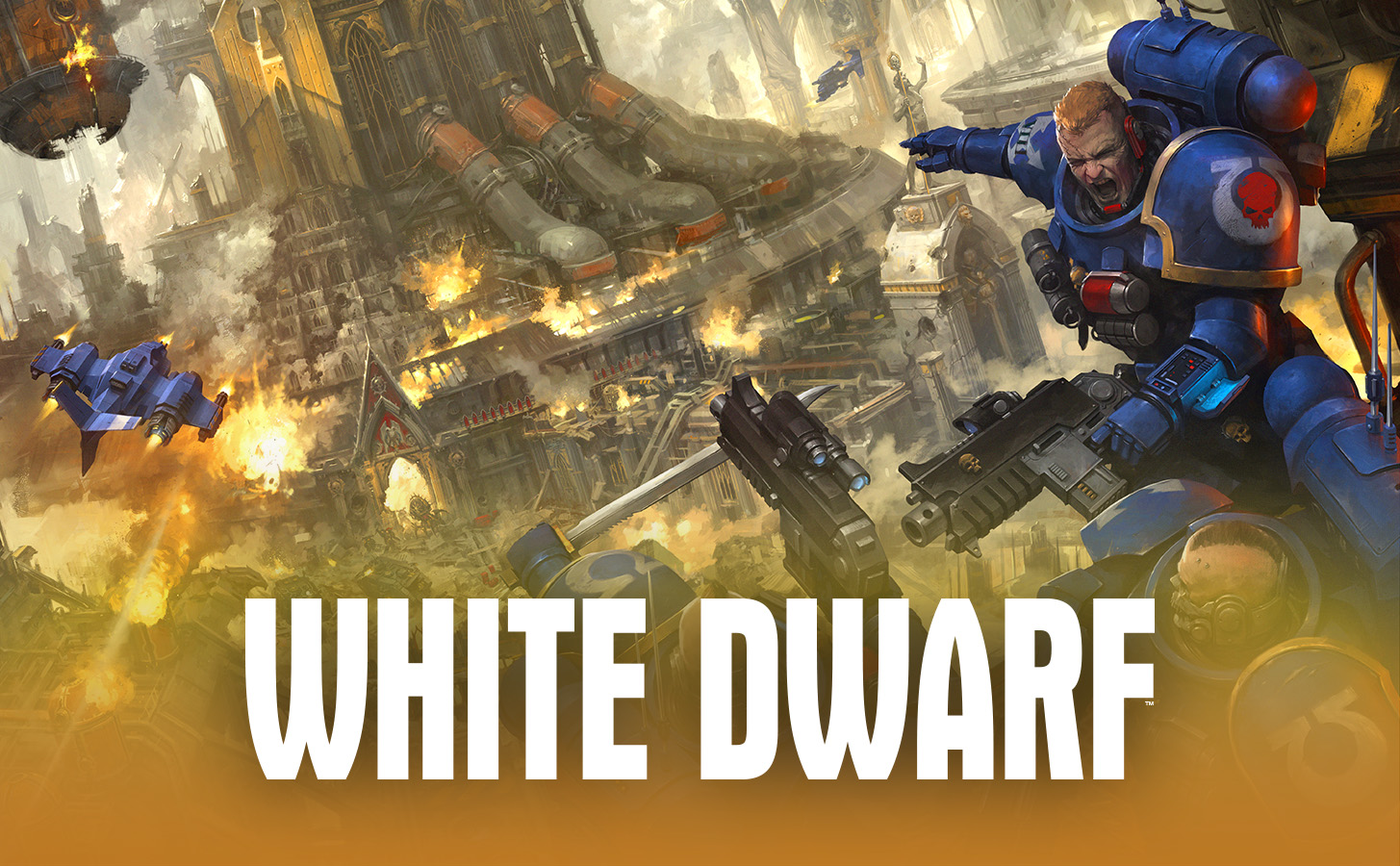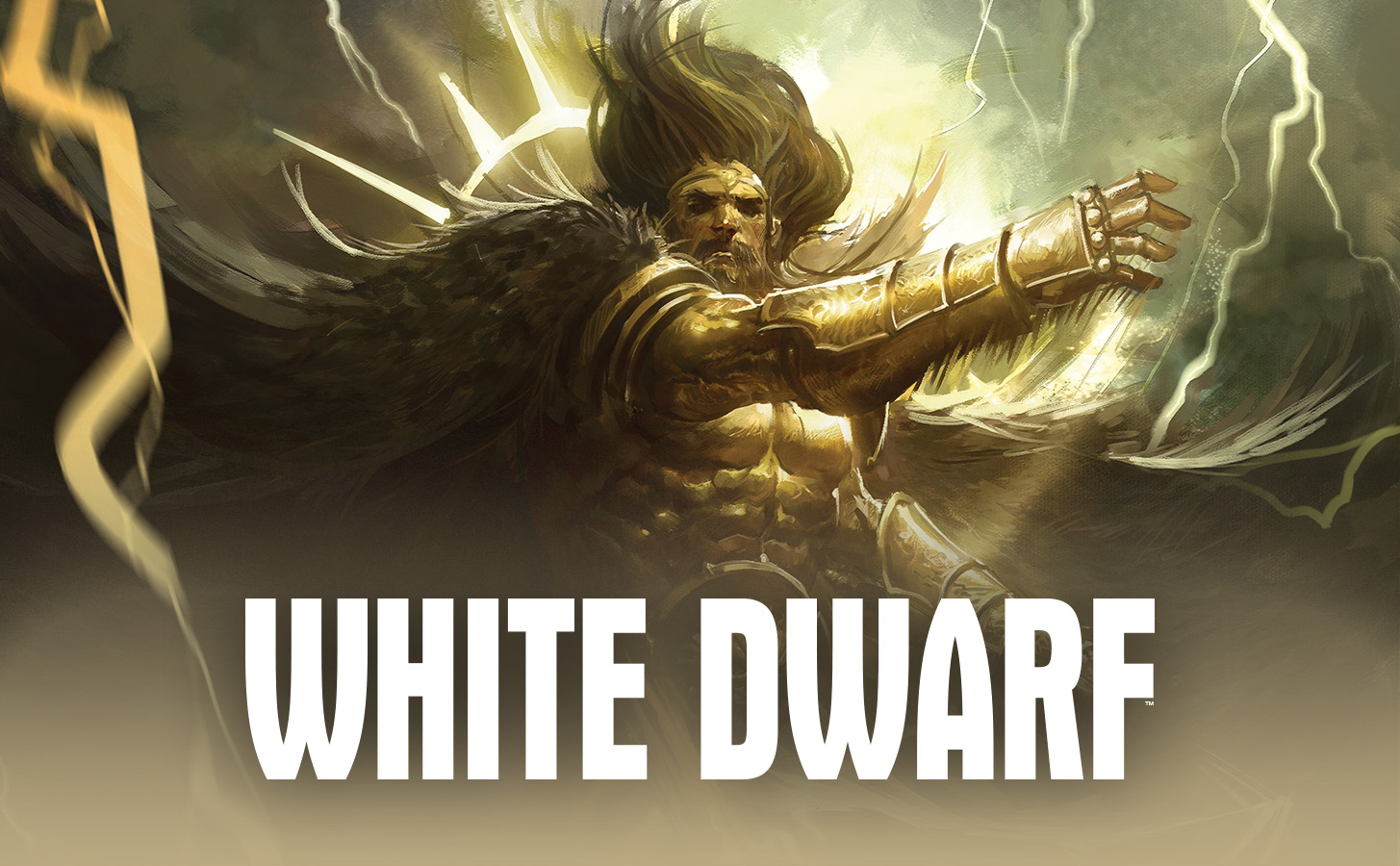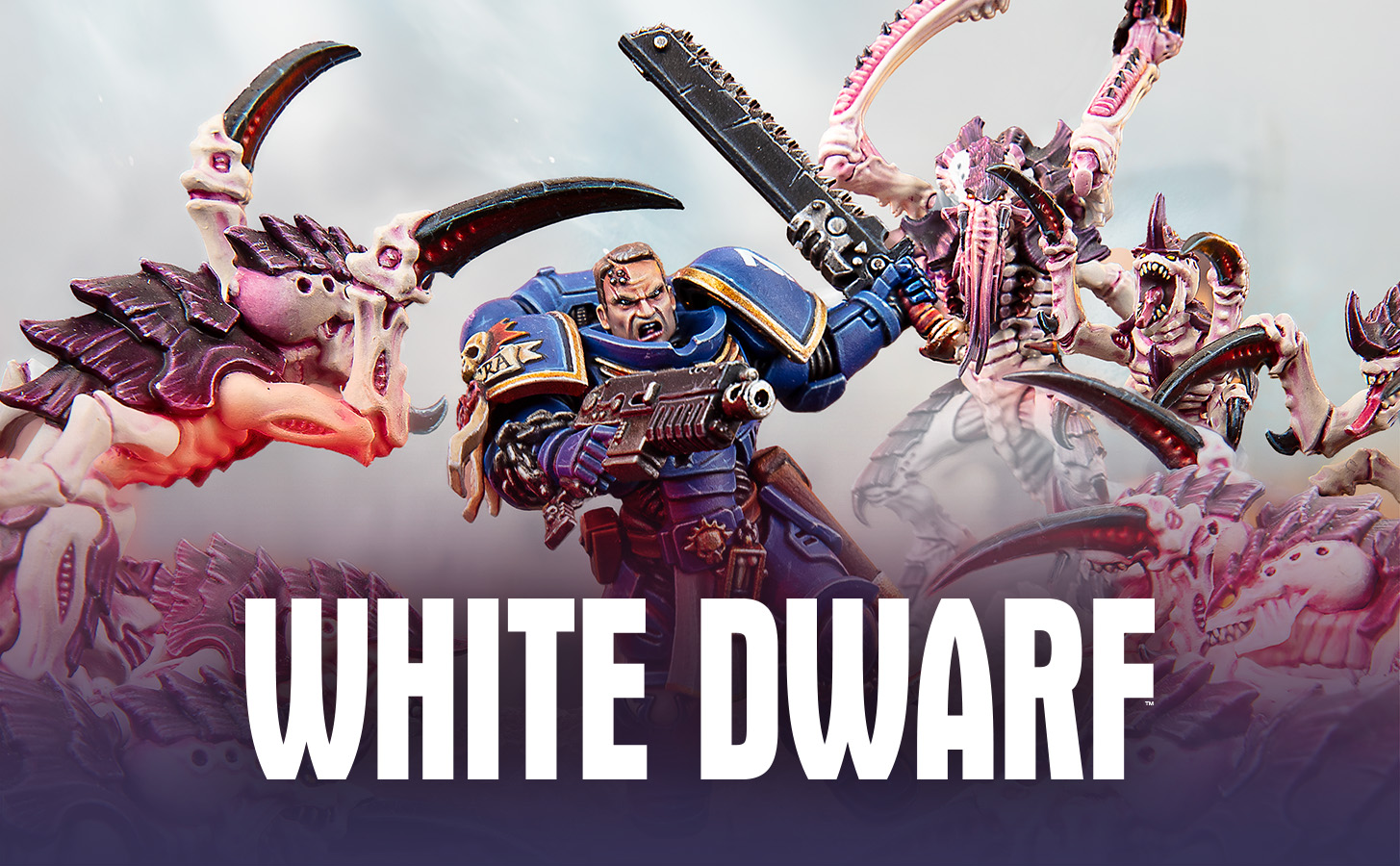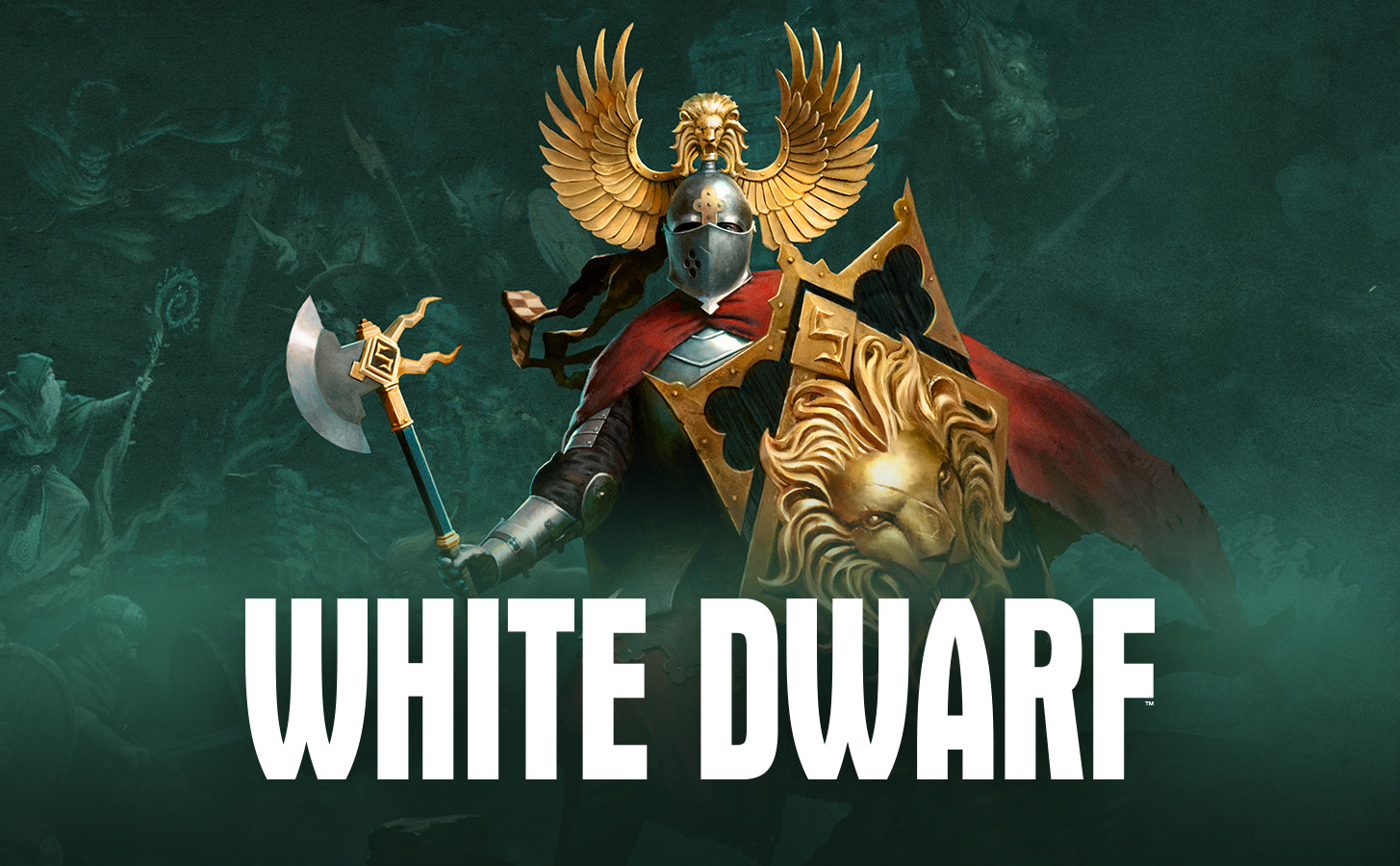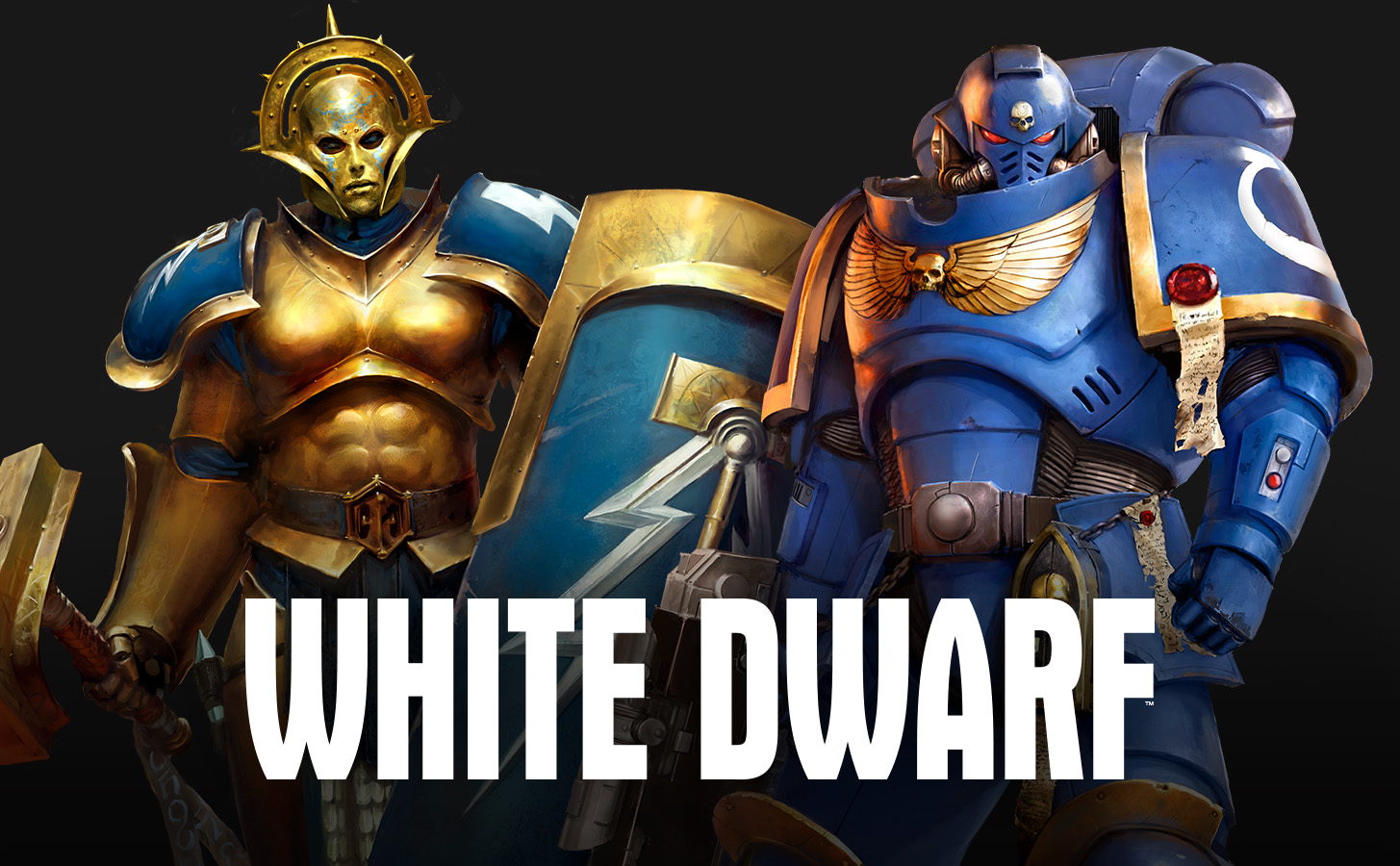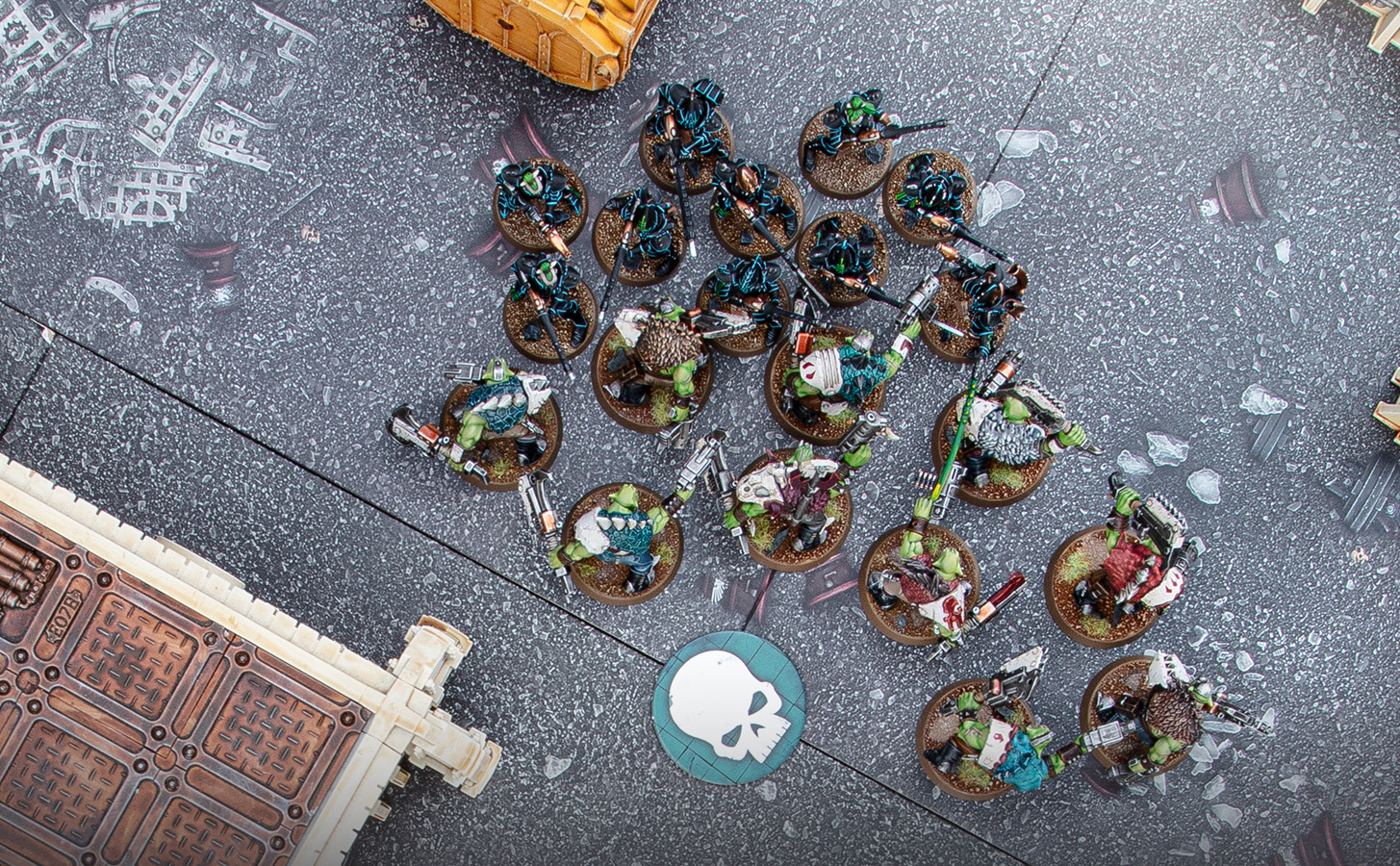The Movement phase is arguably the most important phase in Warhammer 40,000. To help you make the best tactical decisions in your games, we took a dig through the White Dwarf archives and pulled out this treatise from Vanguard Tactics expert Stephen Box.
We have updated this article to take into account rules changes since it was first published.
Stephen: Most of the games you play will be won or lost based on the decisions you make in your Movement phases. As such, it’s crucial that you know where, how and why you’re going to move all your units each turn. And there are a lot of things you can do with them, such as claim objectives, move into cover, move in preparation for a charge, and so on. But how often do you shunt your models forward without thinking critically about their purpose or their positioning?
This article explores the different ways you can move your models and how to get the most out of those moves. It doesn’t cover everything (there are so many things you can do in the Movement phase!), but it should help you think more critically about how you move your models in the future.
To take control of an objective
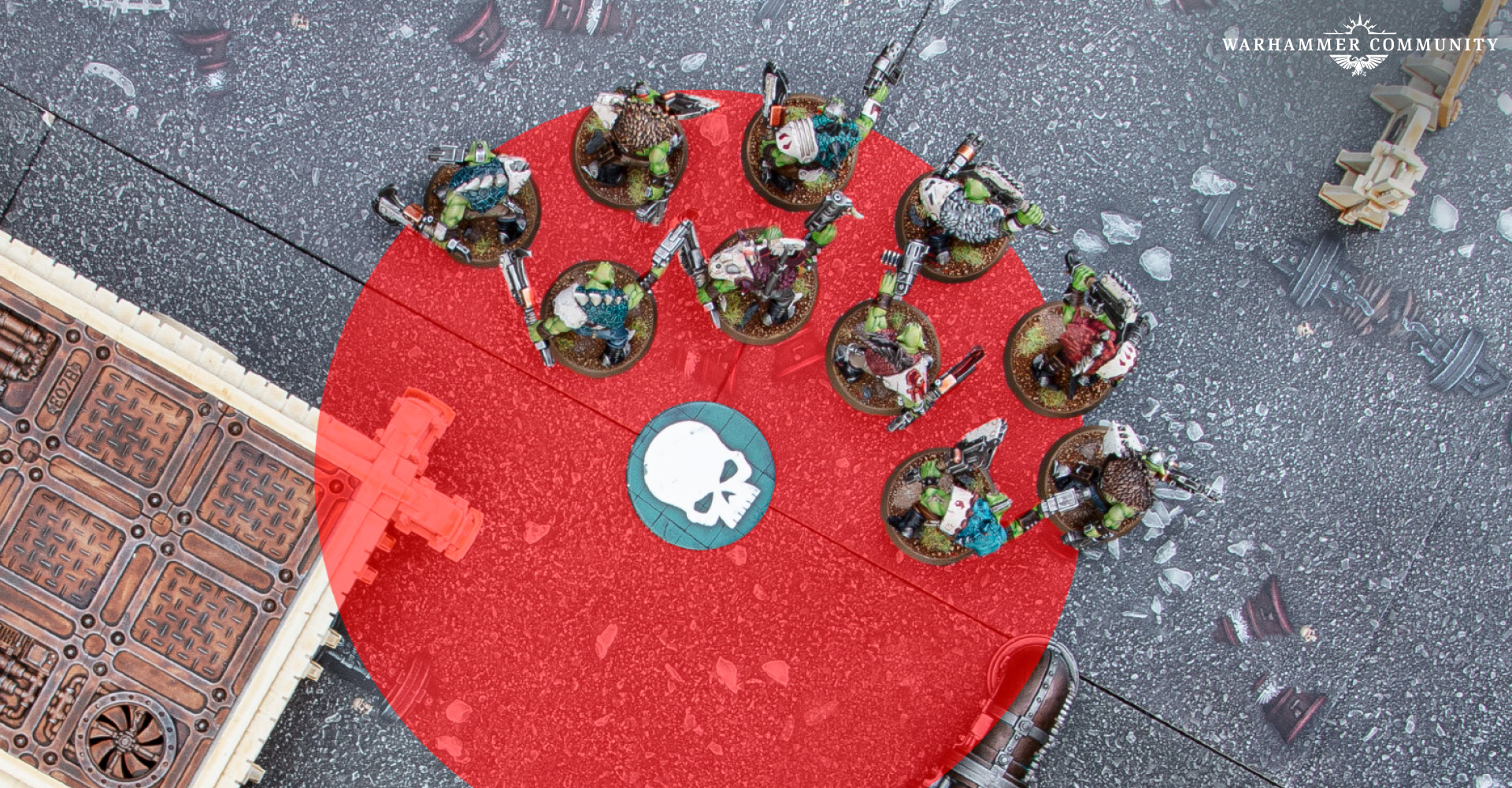
When taking an objective, think carefully about the positioning of your models. Can you place them so they’re hidden from enemy shooting? If not, can you place them so they are in cover? If you’re facing a combat-orientated army, consider placing your models behind the objective so that your opponent’s units have further to charge to reach them.
If you’re using a combat army and facing a shooty army, position your unit in a 3" cordon between the objective and your opponent’s army. That way they’ll have to wipe out your unit or move into Engagement Range to claim it. Remember, as long as you’re not Battle-shocked, any type of move – even Falling Back – can be used to control an objective.
To achieve mission conditions
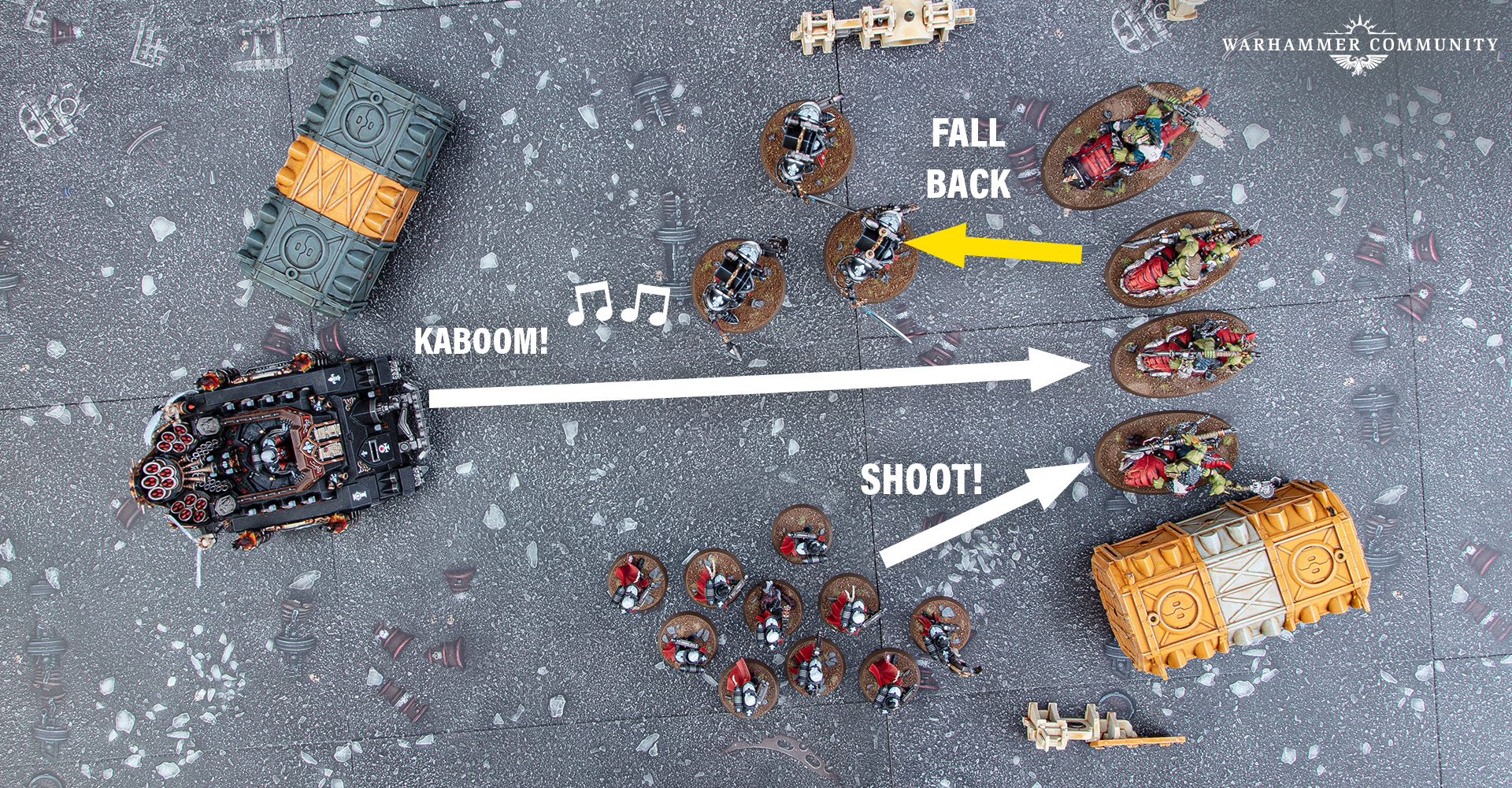
Some missions such as Scorched Earth, The Ritual, and Unexploded Ordnance require you to have units in particular places to achieve them and therefore score valuable VP.
In order to perform a mission Action, you have to be eligible to shoot with the unit you’re using, and you can’t have Advanced, Fallen Back, or be in combat – so you need to think about how you position your troops to maximise the number of Actions you can take.
To block an enemy unit's movements (part 1)
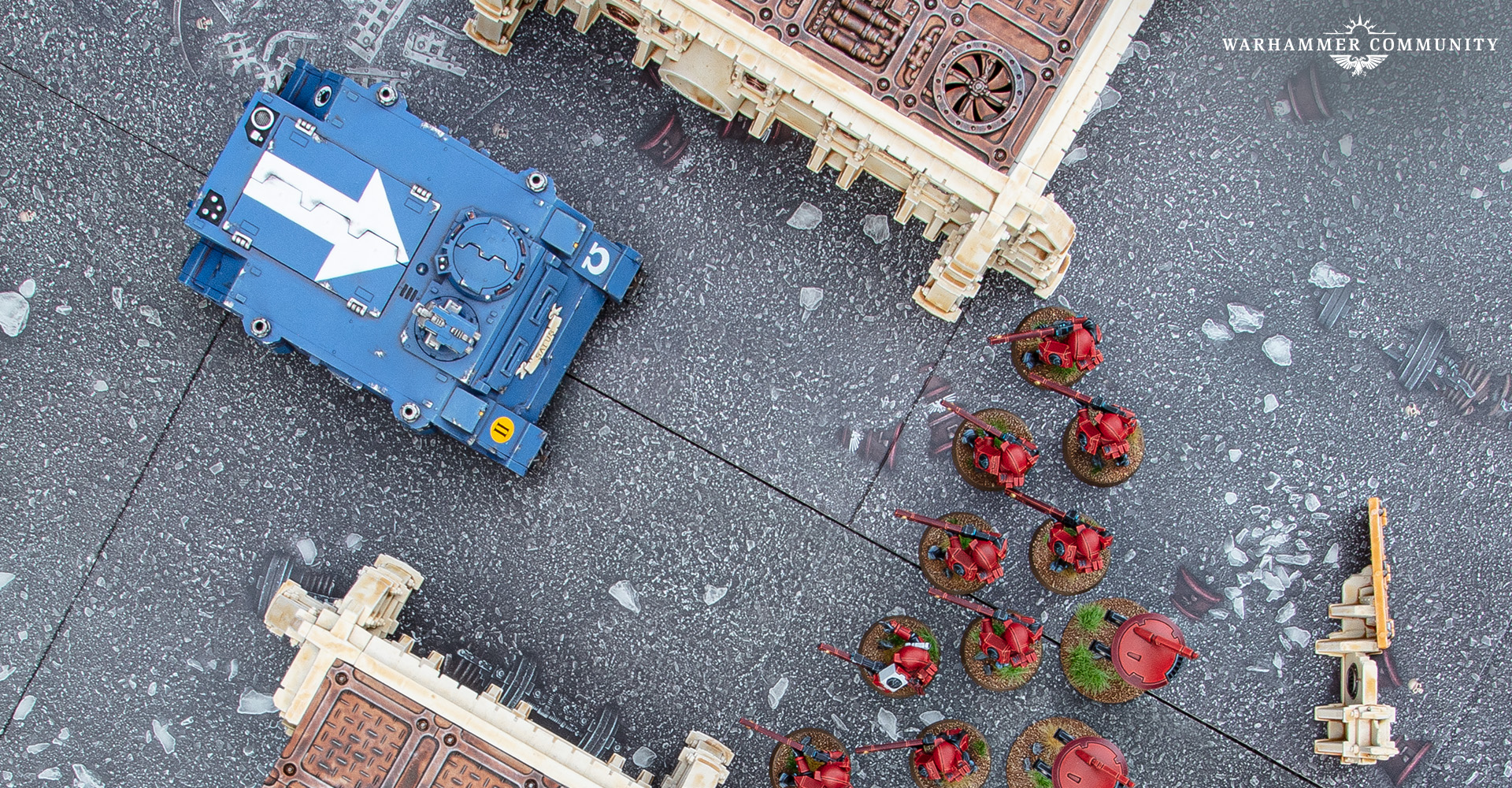
Move your units to stop your opponent reaching something – an objective, perhaps, or a unit you want to protect.
Enemy units can’t move through your units unless they have the Fly keyword (to go over them), so placing units in their way can drastically limit their manoeuvrability and your opponent’s ability to control the battlefield.
In certain circumstances, you can use terrain to your advantage. Large monsters and vehicles may struggle to move through larger pieces of terrain as they need to move up and over it in a single move to get to the other side. Positioning a unit next to the terrain can really limit their mobility.
To block an enemy unit's movements (part 2)
When blocking an enemy unit, think about how much ground you can cover with one unit. By stretching Unit Coherency to its maximum of 2", you can cordon off whole sections of the battlefield, forcing enemy units to make huge detours or engage you in combat.
A five-model unit of Terminators, for example, can stretch across nearly 16" of battlefield.
To prevent a deep strike
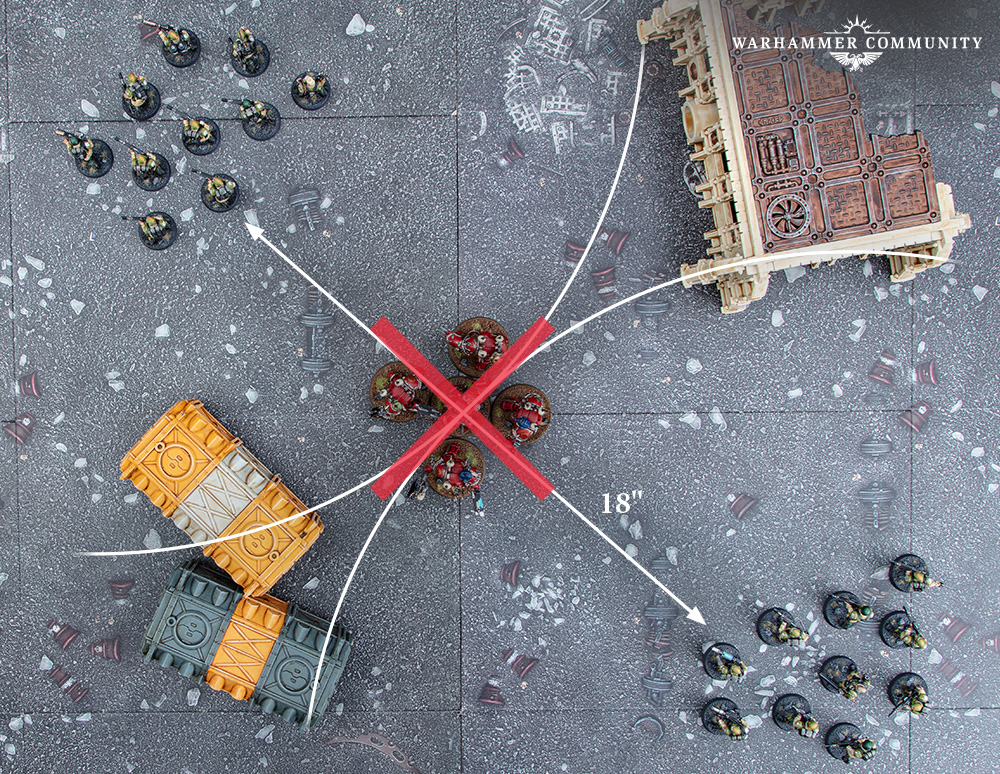
Deep Strike enables your opponent to deploy one of their units anywhere on the battlefield that is further than 9" from your units.
Using the Rapid Ingress Stratagem, they can even do it in your turn! It is definitely in your best interests to prevent this, so in the early stages of the game, move and Advance your units as much as you can to screen off the battlefield and limit where Deep Striking units can land.
Consider spreading your units out to their maximum coherency to cover more ground. It’s good practice to keep units within 18" of each other (and 9" of the board edge) – that way your opponent cannot deploy a unit between them.
Move to shoot
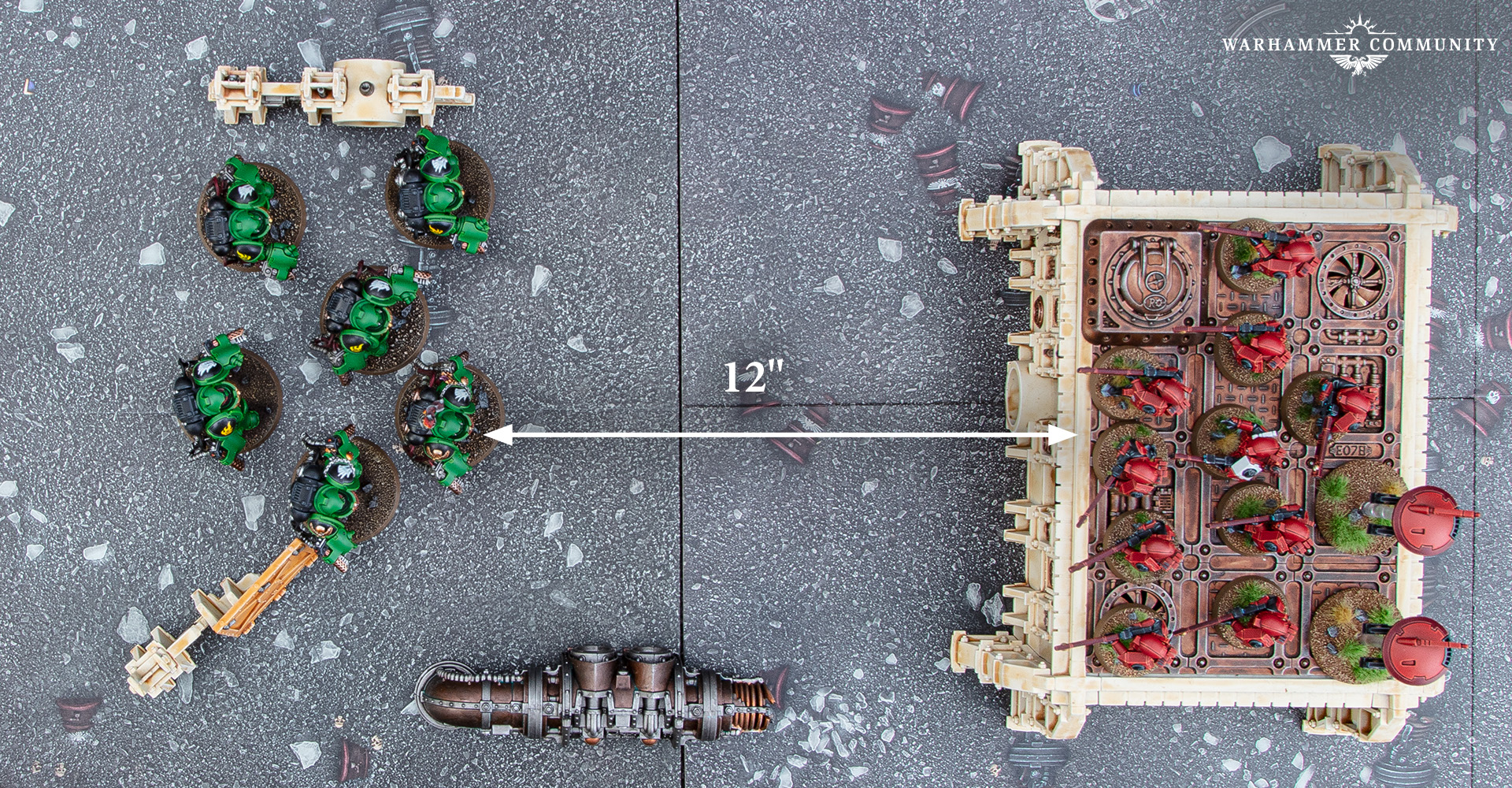
It’s amazing how many people forget to move their units to optimise their shooting. Sometimes you’ll need to move units to get into range to shoot.
Sometimes you’ll need to move to gain visibility on an enemy unit. Can you move a unit so that it can see several enemy units, giving you more options in the Shooting phase?
Moving a unit can even make your shooting better, such as getting a Melta or Rapid Fire weapon within half range. How about moving within 24" of the enemy so that you can shoot them in your turn, then Fire Overwatch in their turn? This is even more potent with Torrent weapons as they don’t need to roll to hit!
Move to charge
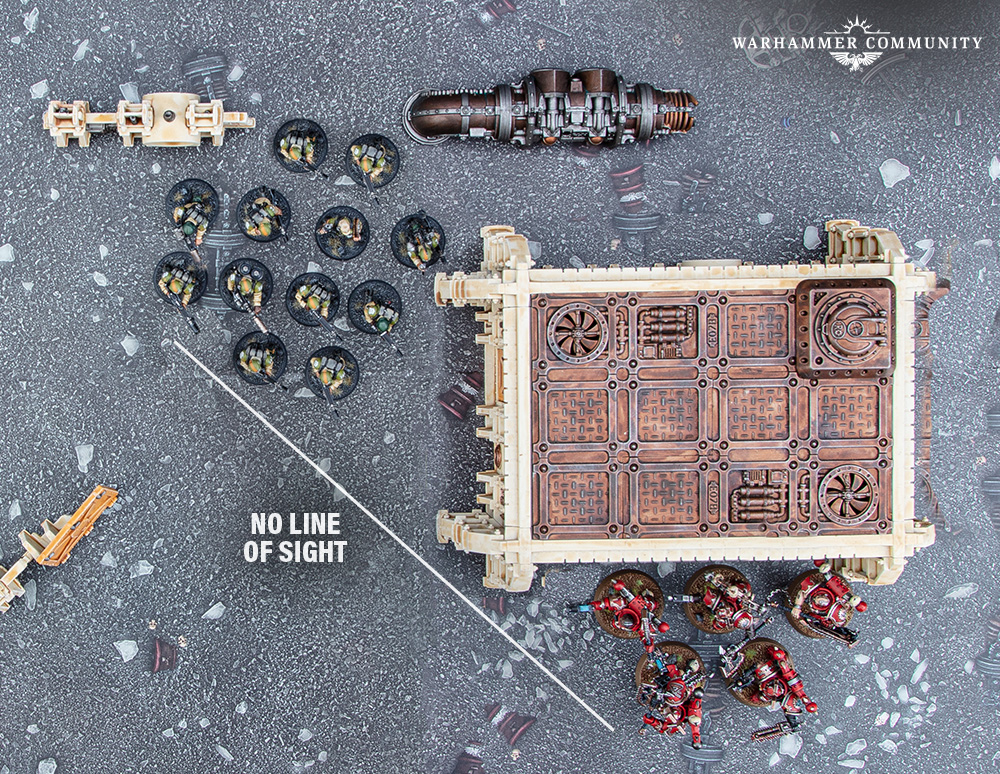
If you plan to engage the enemy in combat, ensure you move your models in the most efficient way before you make a Charge move.
As examples, you can move around the flank of an enemy unit to get more models onto an objective when you charge, or wrap around a vehicle to prevent the units inside disembarking. You also don’t need line of sight to charge, so you can move your unit behind line of sight-blocking terrain to prevent the enemy using the Fire Overwatch Stratagem (which is triggered when a unit declares a charge).
Move to get out of trouble
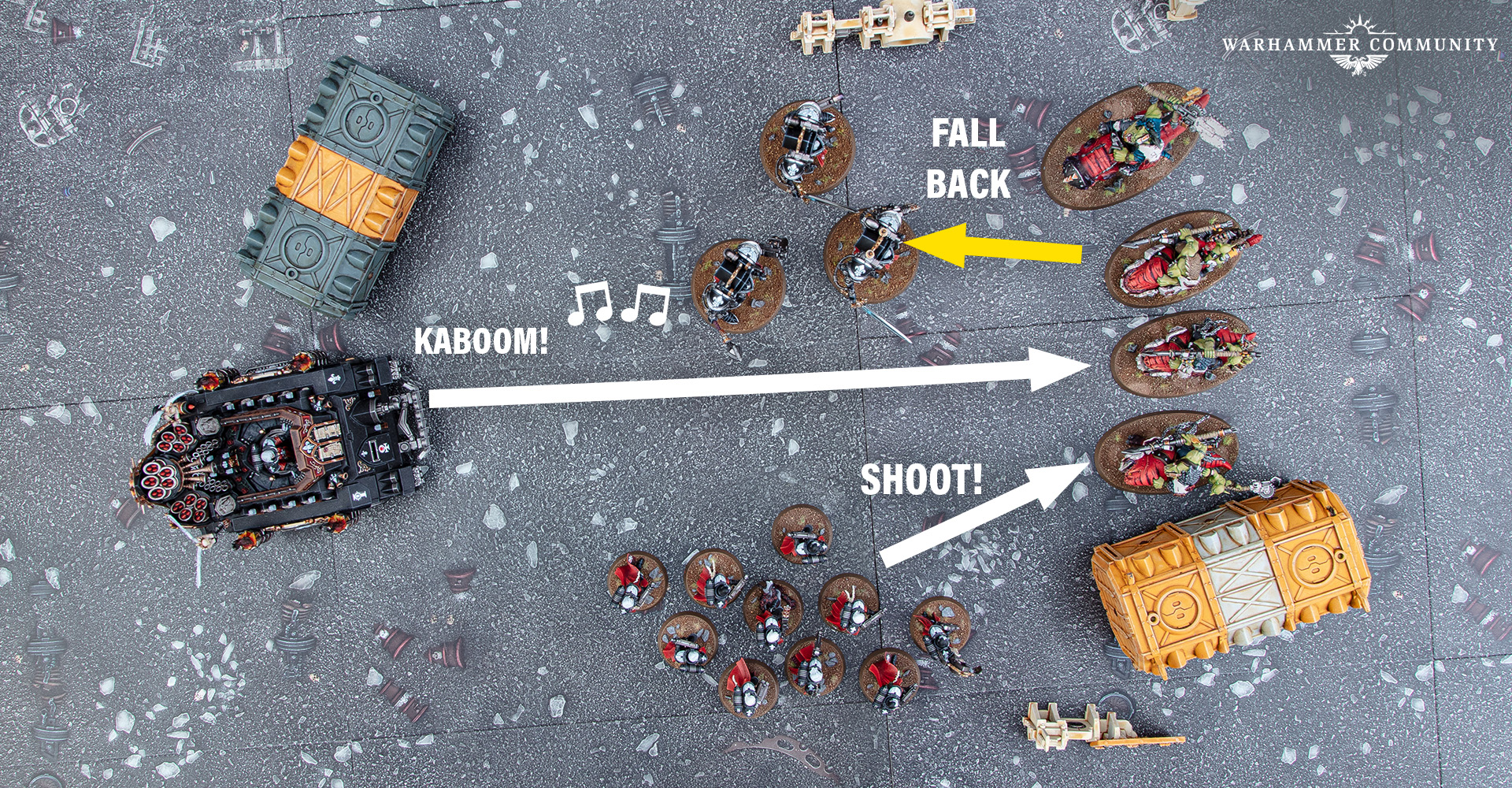
If you have a unit engaged in combat, sometimes a Fall Back move is the best option. This is because, when it comes to the Remaining Combats stage of the Fight phase, your opponent will get to resolve their unit’s attacks before you resolve yours.
Unless you feel certain your unit will survive and wipe out the enemy, or if you have to hold that position, then a Fall Back move will keep your unit alive and enable you to shoot the enemy with your other units.
It’s worth checking your datasheets for units that can Fall Back and still shoot or charge, or Stratagems or abilities that allow you to do that (the Space Marines Tactical Doctrine, for example).
Stephen Box is a veteran Warhammer 40,000 player and a master tactician. He runs Vanguard Tactics, a website that helps people to think critically while remaining composed and confident in their ability to play Warhammer 40,000.



